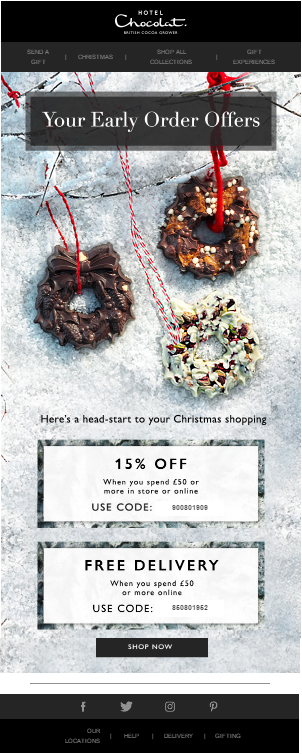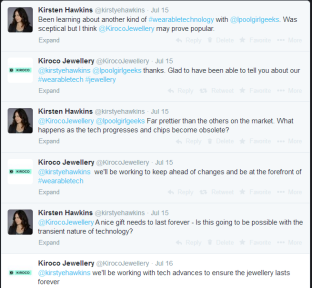Monday 3rd April, Love Thy Neighbour Cafe, Liverpool
When you rush from Chester to Liverpool via public transport, the event at which you end up had better be good. It had better be the best to justify the train fare and the taxi fare.
So it’s just as well that the Liverpool Girl Geeks excelled themselves once more with a panel of inspirational female success stories, who provided us with a plethora of valuable insights.
The panel
Liverpool Girl Geek Director and panel presenter Jo Morfee had certainly done her research, using her knowledge to elicit thoughtful responses to the issues we are all ruminating on as female professionals, consciously or otherwise.
The answers came from a diversity of leaders. Aine McGuire, the only one present who could be described as a founder of a business, set up data insights company Sensible Code, leaving a secure role in IT to step out into the wilderness of self-employment.
Dr Kate Black forged her way into the career road less-travelled, becoming the first female lecturer in her department at the School of Engineering, University of Liverpool.
Michelle Ford worked her way up to becoming Operations Director for design agency Uniform from an account management and design background, making a positive impact to the inner workings of this establishment for employees with families.
Finally, Deanne Walsh represented the world of IT recruitment as HR Manager for digital agency Mando, and thus lent her professional insights into the esoteric art of candidate selection.
It was refreshing to see that, rather than being an event to celebrate success that seems unattainable to the average female, and make us all feel down in the process (read: I did it, why can’t you?) it was a meeting of minds, where junior professionals could see a reflection of the future if only we can iron out some obvious disparity as a society. These women recognised that, as much as things have improved in the last fifty years, there is still work to be done.
I often attend events, feel rejuvenated by the wisdom I hear and then over the next few days my enthusiasm inevitably dissipates. To prevent this, I took some notes down and decided to record a few takeaways I can share with my forgetful future self (and anyone else who happens to be reading).
1. Some men our our keenest supporters, and some women aren’t
There are many men who want to help the cause of diversity and equality. Some of our panel had had male mentors who championed them in their journey, selflessly and without any agenda. Let’s remember that equality includes men too. I certainly wouldn’t want an all female society.
On the other hand, we know of successful women who have adopted male characteristics in order to shoot through the glass ceiling, only to leave the rest of us behind and not look back. Women should not behave this way. Instead of patting ourselves on the back for being the special ones once we get there, we still have a responsibility to remedy workplace imbalance and support women looking for that next step.
Sometimes women leaders can feel a sense of inadequacy when confronted with another talented female, yet those in managerial roles are encouraged to recruit people who are “better” than they are in order to create a strong team. (“Better” is in inverted commas, because no-one is better, just stronger in different areas – This opinion is my own!)
Workplaces should ensure interview panels have equal representation from men and women to avoid the “halo effect” when it comes to candidate selection. There was a consensus that recruiting a woman should be based on merit and not gender, so it’s a categoric no to positive discrimination.
2. Women can seem shy to take risks…
Men will apply for jobs if they feel they have a chance, even if they don’t fulfil all of the criteria listed on the job specification. Women, on the other hand, won’t push themselves forward if they do not tick all the boxes. If you feel you are ready for a change, you should just apply and something positive will always come from it, even if that positive is valuable feedback for the next job you go for.
3. …but it is not necessarily our fault
Girls are brought up with certain ideas of what constitutes female work and which roles are for men. Dr Kate Black recalled that even when a girl has decided to apply for undergraduate study in the school of engineering, parents are less than encouraging, fearing their little darlings will struggle in a male-dominated environment.
Certainly in IT, people have the impression that it is boring, all about numbers and code, and not people-centred, so will not require the softer skills associated with a more nurturing nature that women are supposed to possess.
With a shortage of publicly celebrated female role models in these male-dominated industries, it is hard to give girls diverse aspirations. As Aine McGuire succinctly expressed it: “If you don’t see it, you don’t want to be it.”
4. The jobs are waiting to be filled by women
According to Deanne Walsh, there are the jobs in IT waiting for women, but not enough women are applying. Perhaps they are not aware of this skills shortage, but that is good news if you do want to jump start your IT career. And the same goes for data science!
5. Get a mentor and a support network
Trying to establish yourself on a certain career path takes a lot of guts and determination, especially if, like me, you didn’t start off in your chosen area and your degree has absolutely nothing to do with IT or tech (or in my case, marketing!). It helps if there is someone in or outside of work to guide and support you, who can give you impartial advice and tell you you can!
Additionally, a network can give you reassurance and direction when it is not possible elsewhere. Plus, in my opinion, interacting with a number of people in your field can offer fresh insight, which stops you stagnating or sticking to what you know. Find the people who will challenge you and push you beyond your comfort zone. In my teaching days, I had a support network in the form of a Twitter “personal learning network”. This was a great chance to get instant feedback from other teachers situated all over the world. They shared many ideas and personal blogs on their classroom practice, which was often helpful and inspiring. So a network can be online as well as offline.
6. Look for managers you can work with
One of the panellists compared starting a new job to a marriage because “you want it to last.” There is the modern day adage: “People don’t leave jobs, they leave bosses,” so if you are looking for that dream job, research the company, check out the interviewers, but beyond that, it is essential you find out who you are going to be working with, and if he/she is the kind of person who will aid you in your career. This is really hard to do, so it makes sense to ask current employees. It shouldn’t be one-way; if potential managers are conducting social media investigations on you, then surely as the candidate, you should be applying your own.
7. Confidence is king!
Ultimately, managers, mentors and peers can only give you so much feedback. You have to “trust your gut” and “believe in yourself” if you are going to succeed in the area you care about. Someone very kindly shared this Amy Schumer quote on Linked In a few weeks ago and it rings true: “I say if I’m beautiful. I say if I’m strong. You will not determine my story – I will.” So be confident and begin creating your own story.
Of course, this is just a selection of the wonderful realisations I picked up at the Be The Boss event, and if you were there, other nuggets of advice may have resonated with you more. If that is the case, I would love to hear them, so please leave me a comment with your own talking points.












